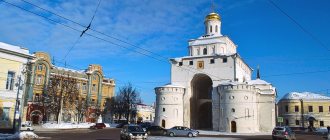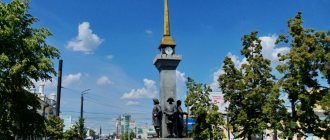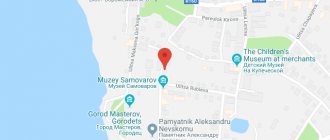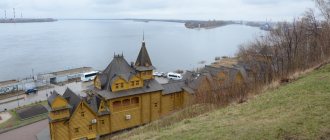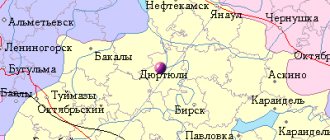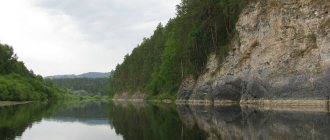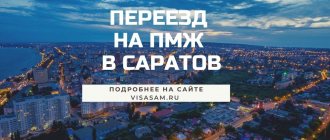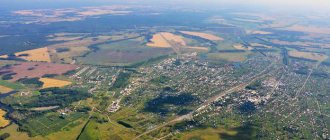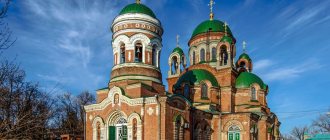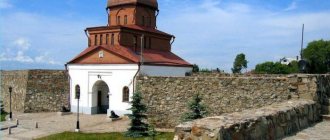Like many Russian cities, Yakutsk has preserved its historical history; inspection of 19th-century buildings and streets paved with logs of different diameters will introduce you to the architecture of past years. There are small cafes and cozy restaurants, souvenir shops and shopping centers here.
One of the interesting buildings is the Kushnarev house. The stone mansion has been preserved in good condition. Many houses in the “Old Town” were recreated according to drawings and sketches of the 19th century.
The small neighborhood is surrounded on all sides by modern shopping centers and high-rise buildings. Against their background, modest wooden houses with signs “Pharmacy” and “Salt Shop” look a little unnatural.
In Yakutsk there are exhibitions that are not similar in other regions. Visit museums that introduce you to the edge of permafrost.
Mammoth Museum
In the Lena Delta, associate professor of zoology Adams discovered the skeleton of a huge mammoth back in the 18th century. Later, tusks and bones of other extinct animals were found.
Tourists will be interested in:
- archaeological finds that shed light on the life of the peoples of the northern regions;
- tusks and remains of skeletons of ancient musk oxen, cave lions, woolly rhinoceroses;
- tools and hunting devices that belonged to primitive people.
Address: st. Kulakovsky, 48.
Places for walking and entertainment
Public urban space in Yakutsk is just beginning to take shape. As part of the reorganization of the parks, two key areas for the city were updated. But there are leisure centers and entertainment for children and adults.
Central Park of Culture and Leisure
The park is the northernmost in the Far East. The location is created for both a quiet, eco-friendly holiday and an active holiday for the whole family. The area is landscaped with lawns and numerous trees - mainly pine trees, between which there are walking paths.
There are 23 attractions in the Central Park of Yakutsk:
- The most interesting of them is the 40 m high Ferris wheel.
- A road train, a swimming pool with boats, and a carousel are available for children.
- Older children are invited to ride the free fall tower and jump on the extreme trampoline.
- Among the family options, it is worth highlighting the Calypso attraction.
In winter, the park operates a ski rental service, and in summer there are outdoor cafes, numerous retail outlets and an umbrella library.
Circus
State Circus of the Republic of Sakha named after. Marfa and Sergei Rastorguev was created in 1994. The institution moved to its current building 10 years after its founding.
The new arena was built using a unique technology - taking into account permafrost, because it is the northernmost in the world.
The circus has a permanent troupe that includes jugglers, magicians, dancers, acrobats, gymnasts, trainers and, of course, clowns. The poster often invites artists of original genres to perform: stilt walkers, horsemen, firemen and other circus performers of unusual specialties.
Square "Gates of Yakutsk"
A public space has been created on the square in front of the airport building. The park has special pavilions and locations for skaters, cyclists, and rollerbladers.
The main decoration of the place is the art object “Brass Fortress”, depicting the most famous landmark of the city - the Tygyn Tower. The architectural ensemble is complemented by monuments in the form of two passenger aircraft AN-24B and Yak-40. The park has benches for residents to relax.
Aqua center
The cultural and entertainment center operates all year round on the Khatyng-Yuryakh highway. The water park has entertainment for adults and children. Visitors are invited to ride on outdoor slides that lead to a spacious swimming pool. The decoration of the complex is the Cobra waterfall.
The aqua center features a toddler bath and a large underwater geyser, all indoors. The water in the pools is warm all year round and is heated to a temperature of +25°C.
The water amusement park is open: Monday–Tuesday from 10:00 to 21:00; on weekends – from 10:00 to 22:00.
Khomus Museum
The unique exhibition is entirely dedicated to the musical instrument that the Yakuts play with great pleasure.
The head of the khomus circle, I.E. Alekseev, collected and donated 20 khomuses that previously belonged to the peoples of different countries to the museum’s funds. Many guests will see this wonderful instrument for the first time, which produces unique sounds.
Address: st. Kirova, 33.
Archa's house
What other attractions of the city of Yakutsk were not mentioned. Archa's house is located at Chernyshevsky, 24. Visitors to this spiritual center have the opportunity to take part in religious holidays and rituals. The indigenous population of the Republic honors the beliefs of their ancestors and ancient traditions. Archa's house is always popular.
Not only religious events take place on the territory of this building. Exhibitions of works of decorative and applied art and folklore festivals are also held here. The building itself is also interesting, as it embodies the features of the national style. Sacred totems can be seen in front of the entrance.
Ethnographic center Us-Kut
Five kilometers from Yakutsk there is an interesting complex dedicated to the customs, traditions, and rituals of the peoples of the Far North. A small ethnographic center was created by enthusiasts Valentina and Vasily Atlasov.
After a tour of the center, you can understand how the inhabitants of Yakutia lived in harsh conditions. There are many interesting exhibits on the territory of the tourist complex.
The hospitable hosts conduct excursions themselves.
Address: 5th km of the Vilyuisky tract.
You can get a lot of vivid emotions after visiting another ethnographic complex called “Chochur-Muran”.
A visit to the ice caves with spectacular lighting will leave an unforgettable experience.
At this tourist center, guests understand that the kingdom of permafrost can be beautiful.
Here you can feed reindeer, see reconstructed Yakut dwellings, relax in comfortable wooden houses, take pictures on an ice throne or next to sparkling pillars.
Ethnographic complex “Chochur-Muran”
Tourists can learn about the life of the Yakuts and immerse themselves in the atmosphere of past years by visiting the Chochur-Muran Ethnographic Complex. On its territory there was a house where a merchant could live . Decorative elements, objects and clothing found here have been recreated to the smallest detail. Some of the exhibits are originals.
After examining the buildings and things, visitors go on an unusual walk in a dog sled, witness religious ceremonies and hunting.
Ethnographic complex “Chochur-Muran”
Museum of Folklore Music of the Peoples of the Republic of Sakha
It will be interesting even for those who are not eager to visit museums. The rich collection of musical instruments and ritual objects of the inhabitants of Yakut settlements leaves no one indifferent.
Images of shamans calling on various spirits, crazy dances and drawn-out sounds that you cannot hear in everyday life immediately appear before your eyes. Drawing, mysterious music accompanies guests during the excursion.
Address: st. Kirova, 31.
Yakut churches and cathedrals
In the capital of the Sakha Republic, people of different religions have long lived side by side. Therefore, the city has churches of several faiths at once. At the same time, representatives of the indigenous population have the opportunity to follow their historical religious traditions.
Transfiguration Cathedral
- Opening hours: daily, from 8:30 to 19:00.
- Address: st. Kirova, 3. Transport stop "Art Museum".
The oldest surviving city church was built with the money of the wealthy merchants, the Solovyov brothers, and consecrated in 1838. The five-domed church with gilded domes, a refectory topped with three onions, is a remarkable example of the pseudo-Russian style in religious architecture. It has a two-tier bell tower with high arched windows, covered with a high conical tent. In the 30s of the last century, the temple was closed, and the building was used as a library. Only 60 years later the cathedral was returned to the believers. After restoration completed in 2001, it looks great.
St. Nicholas Church
- Opening hours: daily, from 8:00 to 19:00.
- Address: st. Oktyabrskaya, 31. Transport stop "Oktyabrskaya".
Of all the churches in Yakutsk, only this church managed to preserve its original appearance unchanged, and, oddly enough, we have the CPSU to thank for this. It was precisely because party archives were kept in the building after the revolution that it was kept in perfect order. Of course, the painting on the walls and dome was destroyed, but otherwise the temple was almost undamaged. Therefore, today the townspeople and guests of Yakutsk see the church exactly as it was in the middle of the 19th century.
Archa's house
- Opening hours: on weekdays, from 9:00 to 18:00.
- Telephone.
- Address: st. Chernyshevsky, 24. Transport stop "Art Museum".
Many indigenous people of the Sakha Republic honor ancient traditions and adhere to the beliefs of their ancestors. In the spiritual center of the Archy House, they have the opportunity to participate in rituals and religious holidays, and constantly feel involved in the national culture. In addition to religious events, folklore festivals and exhibitions of works by masters of decorative and applied arts are held here. The building of the center looks surprisingly colorful. Its exterior displays characteristic national motifs. Sacred totems are installed in front of the entrance to the center.
Museum of History and Culture of the Peoples of the North named after. Yaroslavsky
The oldest exhibition in Yakutia. The museum opened in 1891. Residents of neighboring settlements and political exiles decided to preserve the unique exhibits so that future generations would understand how their ancestors lived.
The two-story building houses a thematic exhibition and a library. You can trace the history of the northern region and examine household items, national clothing, musical instruments, shamanic drums and other relics that have survived to this day.
Address: ave. Lenina, 5.
Sports complex "Triumph"
What to see in Yakutsk? The Triumph sports complex is considered the architectural pearl of the capital of the Sakha Republic. The grand opening of this colorful building took place in 2012.
The building, erected on stilts, embodies the features of a futuristic style, so it seems to come from the future. The sports complex can simultaneously accommodate over 3,000 spectators. Local residents and tourists have already loved taking pictures against the backdrop of the building.
House-Museum of Political Exile
The territory of the museum occupies more than 11 hectares. Unique exhibits from all over the Sakha Republic, which became a place of exile for thousands of prisoners, are collected here.
After uprisings and revolutions, political exiles appeared in these parts and began educational and scientific activities in the territory of Yakutia. Valuable documents, old photographs, personal belongings, and interior items from the houses where the exiles lived have been preserved.
Address: st. Yaroslavsky, 5.
Parks and monuments, streets
Old city
Address: st. Arzhakova
A quarter of recreated and original ancient buildings is the historical center of Yakutsk. It conveys the appearance of the city in the late 19th and early 20th centuries.
The quarter is paved with wooden blocks. The most famous buildings: the house of the Yakut political figure Ammosov, the building of the first women's gymnasium in Yakutsk, the stone house of the Kushnarev merchants.
The Old Town is an artificially created quarter. The original houses burned down in fires at the end of the 20th century. Some buildings were dismantled and moved from other parts of Yakutsk.
Monument to the mammoth in Yakutsk
Address: st. Permafrost, 36
The sculpture made from rebar was installed in 1972. The dimensions of the monument correspond to real ones.
The mammoth looks quite realistic, thanks to the fact that its “wool” is made from tow.
In summer, the monument also serves as a fountain - it releases water from its trunk.
Shergin mine
The peculiarity of this adit is that it is cut through permafrost. The mine played an important role in the study of geological processes taking place in the beauty of cold and ice. After experiments carried out in the Shergin mine, scientists were confidently able to say: permafrost exists.
Until 2009, daredevils could descend into the mine, which has a depth of 116.6 m. The site is currently temporarily closed to the public. It is planned to reconstruct the unique monument. You can explore the modest wooden house located at the entrance to the adit.
Address: st. Kulakovsky, 18.
Yakutsk
A few Stalin buildings, a couple of pre-revolutionary buildings, dozens of rickety barracks, high-rise buildings and pretentious modern architecture - not a lot for connoisseurs of Art Nouveau and Constructivism. Yakutsk is not about architecture. Here you need to eat a lot and deliciously, get imbued with the culture in the villages and test your body in fifty-degree frosts.
The main street of the city, who would have thought, is Lenin Avenue with the obligatory Lenin Square and a monument to Lenin (combo). The avenue is a concentration of shops, shopping centers, pedestrians and transport. Don't miss the non-trivial double-sided monument to the janitor (Lenin Ave., 12). There is nothing else to do on Lenin unless you plan to shop.
Monuments to Stalin are no longer such a curiosity in Russia (the cult of personality seems to be returning), but still not as widespread as Lenins, and they are still surprising. Five years ago, a bust of Stalin was installed on the territory (Chernyshevsky St., 6). This is already the third monument in the republic - the first two appeared in Mirny and the village of Amga.
Behind Lenin Square within the boundaries of Ammosov-Arzhakova-Kirova streets is the Old Town . This is a restored double of a 17th-century Yakut fort. The wooden huts were occupied by shoe stores, souvenir shops and restaurants. The most interesting thing is the wooden pavement and a copy of a traditional Yakut house - a booth.
Near the Old Town, go to the largest temple - the Transfiguration Cathedral. The temple is surrounded by featureless monuments, but one is definitely worth a look - the modernist stele in the Eternal Flame memorial complex.
You can listen to the organ and attend Sunday services at the parish of the Roman Catholic Church (Kurashova St., 34/1). For prayer, go to the Cathedral Mosque (Pirogov St., 4) - about 1000 people gather on Friday. The Buryat community of Yakutsk built a Buddhist datsan (Sergelyakhskoe highway 12 km, 12/1a) on the outskirts of the city. The most convenient way to get from the center is by buses 7 and 15. There is no synagogue in Yakutsk, but the old Jewish cemetery has been preserved, and next to it is the Tatar one. They are adjacent to the central park, through which it is most convenient to get to the graves - there is a gate in the fence. It is better to enter from Komsomolskaya Square.
Over the past decade, Yakutsk has been actively built up. It’s hard to call the countless anthills on the outskirts of the city and the administrative housing of the center valuable from an architectural point of view. But still, look at some examples to evaluate the vector of development: Sakha Theater (Ordzhonikidze St., 1), Tuymaada Stadium (Lermontov St., 64) - the only stadium in the world in permafrost, the massive Triumph ( Oyunskogo St., 26), which in its shape refers to the traditional Yakut dwelling uras, the buildings of the North-Eastern Federal University (Kulakovskogo St., 42), business center (Kirova St., 18), Republican Hospital No. 1 (Sergelyakhskoye Highway, 4) and “Passage” (Kirova St., 12) – a round glass building.
The monument to Abakayada (Kirova/Poyarkova) is called the only monument to interethnic marriage in the world. A family was created, according to the sculptor’s idea, by a Russian man and a Yakut woman, as well as their child. Another unusual sculpture is the crucian carp on Lake Thaloy, which was not liked by the locals and was vandalized three times. for monuments to the mammoth at the Institute of Permafrost Studies (Merzlotnaya St., 36) and at the circus (Poyarkova St., 22). A stuffed mammoth is kept in the lobby of the Azimut Hotel (Lenin Ave., 24).
Yakutsk is called “the city with its guts out” due to the fact that communication pipes do not run underground, but outside, due to permafrost. The most photogenic and largest “guts” leave the thermal power plant and walk along Krzhanovsky Street.
Lena does not have an equipped embankment, so Yakut residents walk near city lakes - for example, along the Teploe Lake embankment (Kulakovskogo and Krupskaya streets).
The city beach and water in the 202nd microdistrict are dirty - in Yakutsk you will have to endure without swimming. To swim, go further from the city: to Pokrovsk, Bulgunnyakhtakh, or at least to Prigorodny.
In the center of spiritual culture “Archy” (Chernysheskogo St., 24) you can see elements of the traditional life of the Sakhas: the Urasa’s dwelling with the national Komelok stove, totem poles. And also religious rituals of communication with spirits, but for an additional fee. Don't take this too seriously - for the most part this is a reconstruction of traditional rituals and elements of Yakut life, although since 2014 the traditional Yakut religion Aar Aiyy has been registered with the Department of the Ministry of Justice. For real mysticism, it is better to come on holidays or go to villages. But elements of Sakha beliefs can be observed in everyday life: for example, amulets made of horsehair, which are mainly hung on rear-view mirrors in cars. Or serge - ritual pillars that are placed at the entrances to populated areas.
Yakutsk is famous for its ice sculptures. At the end of November, an international competition is held, after which the sculptures spread to different points in the city. Look for them near administrative buildings and squares.
Despite the two-meter thickness of the Lena ice, cars sometimes fall into ice holes and ice. Take a walk along the shore in search of stuck cars - the sight is impressive. You may find drivers freezing it out - this is an incredibly interesting and exciting process when layer by layer they cut out the ice under the car, which can go under water again.
Shergina Mine (Kulakovskogo St., 18) is a mine with a depth of 116.6 m (together with the well - about 140 m), dug in the permafrost of Yakutsk. The merchant Shergin began to build a well, which later turned into evidence of permafrost and opened up the possibility of studying it. The mine has a protected status, which the authorities do not really understand what to do with, and is now closed to visitors. You can only see the log frame and feel the eternal cold through its cracks.
Chochur Muran. The main observation deck of Yakutsk is located on Mount Chochur Muran. To get from the center, take buses 6, 7, 121, 123 and get off at the stop of the same name.
If you climb the mountain, do not pass by the Ethnographic Complex “Chochur Muran” (Vilyuisky tract 7 km, 5). This is a museum, a restaurant, and an exhibition area. The large log building houses a restaurant with stuffed animals hanging on the walls, Yakut household items on the shelves, and on the third floor there are tipis and traditional costumes for photo shoots. To view the exhibition, you don’t have to dine at a restaurant, although this is an opportunity to try national dishes in one of the best restaurants in Yakutsk. The menu includes all the classics of Sakha cuisine: stroganina from fish and foal, blood sausage, harta - fried large intestine of a foal, venison and foal in different variations - fried, stewed, steaks, meatballs. Price for meat and fish dishes € 5-7. Salad "Indigirka" from raw chira is delicious. In winter, ice sculptures made by local artists are displayed in front of the complex, in summer the restaurant offers guests to rent yurts, canopies and barbecue areas, and a Polar Airlines MI-8 helicopter is a backdrop for photographs at any time of the year. If you are too lazy to twirl skewers, then in the summer cafe for € 3 they will feed you burgers, venison cutlets or a “tourist’s breakfast”: buckwheat with minced reindeer.
Not far from Chochur-Muran, a Yakut Laika nursery has been operating for many years - another pride of the Yakuts. At the kennel you can pet dogs, pet reindeer and even ride in a sled.
Another object that tourists visit on the mountain is “The Kingdom of Permafrost” (Mount Chochur Muran 7 km, 1). A former cold storage warehouse for food, carved out of the mountain, which was turned into a museum. A place where permafrost can be seen from the inside, touched, smelled, licked. The sparse bar pours vodka into shot glasses made of ice. The rest is quite boring - there are ice sculptures in the corridors, you are allowed to play curling in one of the halls. Tickets €7 for adults, €6 for students and pensioners and €5 for children.
The Ministry of Architecture of Yakutsk has set a course for creating several large murals a year, plus smaller-scale works appear as part of the Biennale of Contemporary Art and other festivals. Catch the addresses of all the murals and large graffiti of Yakutsk :
— Spirit of nature and interpretation of the city (Kirova St., 21 and 21/1);
— Illustrations of the Olonkho epic on two facades (Oyunskogo street, 31/2 and 33);
— Running diamonds on the wall of garages near the city beach in the 202nd microdistrict;
— Traditional bowl for kumiss Choron from the Italian Yakurchi (Lomonosov St., 29/1);
— Mother Earth from Evgeny Zhevlakov (Lermontov St., 58/2);
— The young local artist showed up in three places (Dzerzhinsky St., 72, Bogatyreva St., 2 and in the hall of the ice palace on Lermontov St., 64/1);
— The facade of the former New Apostolic Church was painted by Andrei Adno as part of the V Biennale of Contemporary Art (Lermontov St., 36);
— Patriotic art “I am from Yakutia” (Ordzhonikidze St., 48);
— Impressed by the World Cup, graffiti with Russian national team players from two Yakut artists appeared on the shopping wall (202nd microdistrict ½);
— The two-story pharmacy is decorated with a painting by designer Sofia Shilova (Kuzmina St., 10);
— The head of a punk was installed on the shore of Lake Saysary by the Spanish artist Okuda (Oyunskogo St., 26).
Project on the topic “My hometown is Yakutsk” for 2nd grade
Goal of the project: As part of studying the subject “The World Around You,” talk about your hometown, its attractions and memorable places.
Find information about his story and share it with your classmates. Tell schoolchildren about Yakutsk and why I love it. Prepare a report and presentation in the form of a photo story. Project plan:
- Location on the country map.
- History and symbols.
- Yakutsk in the present.
- Attractions.
- Places of military glory.
- Conclusion.
- An example of a finished photo story-presentation.
